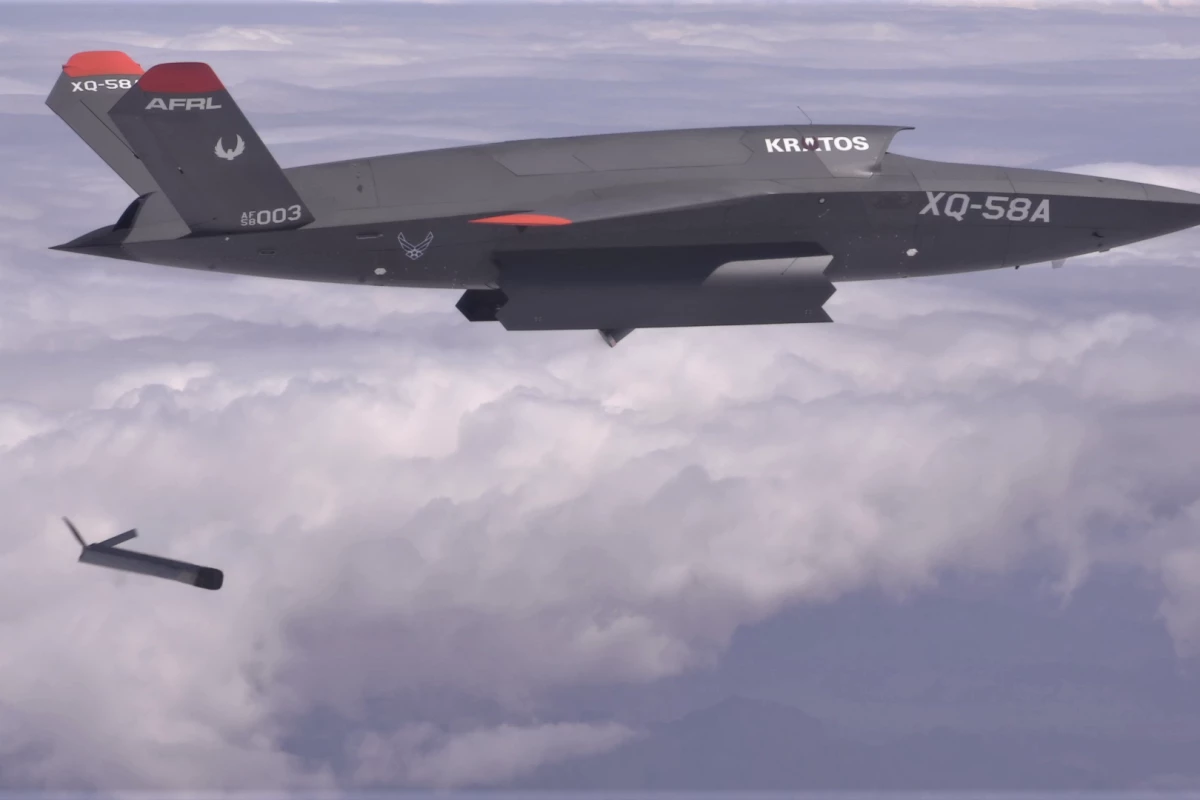Like a high-tech Russian nesting doll, a prototype US Air Force Kratos XQ-58A Valkyrie combat drone being developed by the Air Force Research Laboratory (AFRL) dropped a smaller drone from its weapons bay during flight.
It wasn't that long ago that robotic aircraft were confined to long-endurance reconnaissance flights and occasional missile ground strikes. However, as autonomous systems and artificial intelligence have grown increasingly sophisticated, their capabilities have expanded until the missions that drones and piloted aircraft carry out have not only blurred, but continue to change as the concept of individual aircraft gives way to networked teams working in concert.
An example of this was the latest Valkyrie flight test over the Yuma Proving Ground in Arizona on March 26, 2021, where the jet-powered combat drone launched a ALTIUS-600 Small Unmanned Aircraft System (SUAS) fixed-wing drone. For the test, Kratos, Area-I, and AFRL designed and built the SUAS carriage in the Valkyrie's internal payload bay as well as writing the supporting software.
The Valkyrie is being developed as a runway-independent, high-subsonic pilotless aircraft to explore technologies for future combat drones that can act as escorts for F-22 or F-35 fighters, and serve as surveillance and attack platforms, both independently or as part of a UAV swarm.
The Valkyrie has a wingspan of 22 ft (6.7 m), a top speed of 567 knots (652 mph, 1,050 km/h), a service ceiling of 44,997 ft (13,715 m), and a range of 2,128 nautical miles (2,449 mi, 3,941 km). It can carry eight weapons in its payload bay, including JDAMs and other small diameter bombs.
Produced by Area-I, the ALTIUS-600 is a tube-launched small drone weighing under 27 lb (12 kg). It has an endurance of over four hours and a range of 276 miles (440 km).
"This is the sixth flight of the Valkyrie and the first time the payload bay doors have been opened in flight," says Alyson Turri, demonstration program manager. "In addition to this first SUAS separation demonstration, the XQ-58A flew higher and faster than previous flights."
Source: US Air Force





